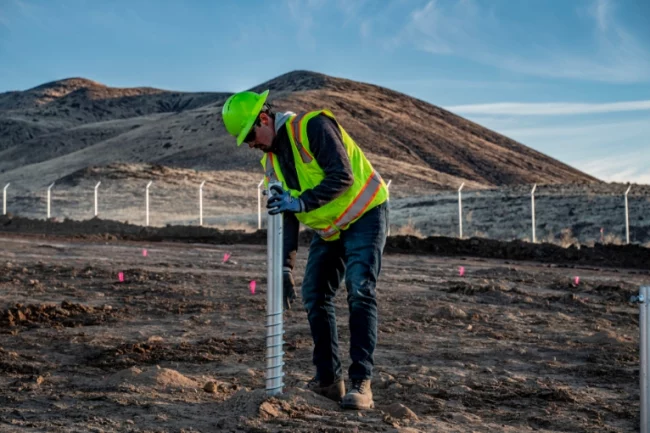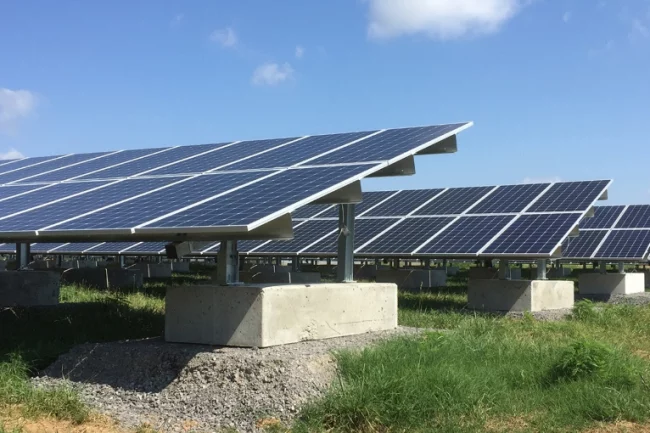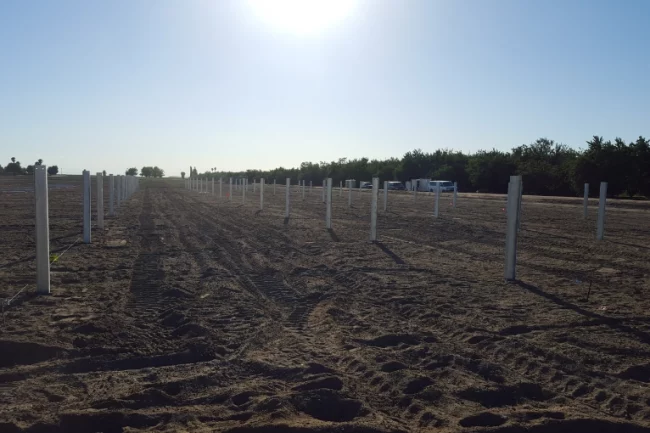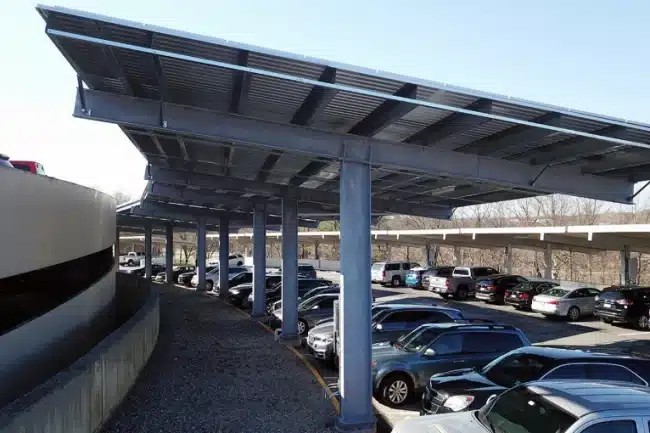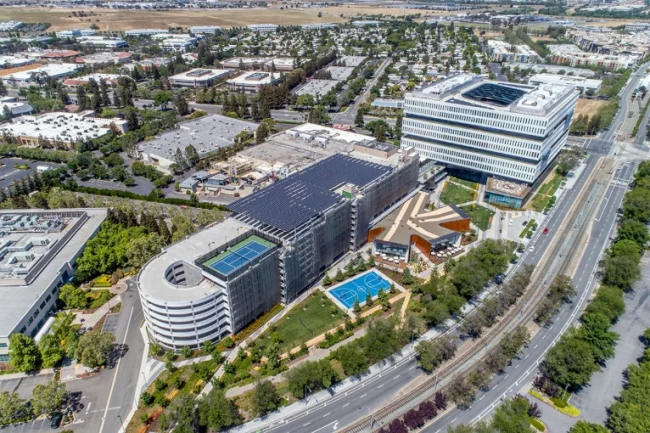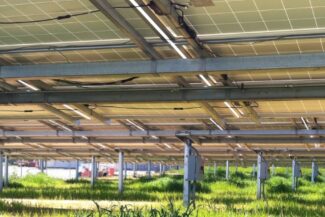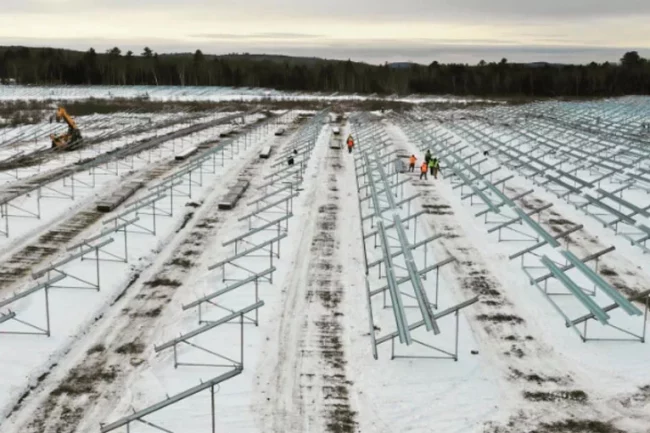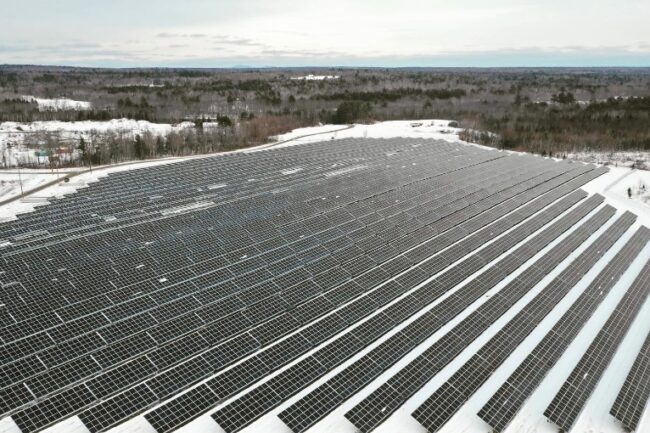Top tips for utility-solar success in the challenging Northeast conditions
Snow has melted, and early signs of spring are ahead, yet developers and EPCs nationwide are already preparing for their winter builds. In some regions like the Southwest, winter construction offers a respite from high-heat temperatures, making it easier for field teams. However, when building PV plants in the Northeast, success is all about planning around winter conditions. Getting it wrong could impact schedules, erode budgets, and stress valuable relationships.
Here to lay the groundwork for triumph in the Northeast are Terrasmart’s top five considerations to avoid skating on thin ice this winter.
1) Design for a blanket of snow
Unlike buildings, which have established codes for snow, there is no standardized code for solar, posing additional challenges for engineers. Before the design phase, geotechnical evaluations such as compression testing are used to apply loads to various locations throughout the site to determine how the soil responds, particularly to heavy snow loads.
Terrasmart’s design and engineering teams often customize systems to provide the reinforcements needed in heavy snow load environments. Solutions such as building racking with larger purlins, smaller spans, and reinforced material; or implementing a higher module front edge height and steeper tilt to allow for better snow clearance.
Snow shed from a solar module only has about three feet to accumulate, while roofs can slough off three times as much snow load. But adding height to the module forces crews to do more awkward, elevated construction work. Racking partners should conduct robust load testing with artificial snow in the winter or tons of bricks in warmer months.
Terrasmart’s fixed-tilt and tracking solutions are built-tough, designed to withstand up to 100 psf (pounds per square foot) of snow pressure for high-snow load environments.

2) Brace against powerful Nor’easter storms
Wind is a key consideration on the coast and along larger inland lakes, where hurricane-force gales often blow through. Severe nor’easter storms can create high winds of over 120 mph along the coast.
Considerations include assessing the varying angles of force possible on the project site and ensuring thorough wind tunnel testing to account for these stresses. Geotechnical lateral load testing is the choice method to measure a foundation’s lateral capacity for sites experiencing high wind loads. Some racking manufacturers use advanced software to simulate the most cost-effective design for a site’s unique wind profile.
Terrasmart invests substantial resources to make sure its systems stand up to wiping winds: our GLIDE Wave and GLIDE Agile fixed-tilt ground mount systems are engineered to withstand winds up to 170 mph and GLIDE Fuse up to 150 mph wind.
Our intelligent solar tracker software with advanced AI and machine learning features is able to mitigate weather-related risks by predicting high winds, snow storms, or hail. The tracker sends an alert to O&M personnel, temporarily stops tracking, and positions the rows in a safe location to minimize any potential damage.

3) Prevent frost heave with ground screw foundation
Northern latitude installers know first-hand the devastating impact frost heave can have on a project’s long-term LCOE by having to remediate raised-up foundations, destroying the project’s overall returns. Frost heave is prevalent in the Northeast and Midwest regions due to a combination of several factors: namely, a climate where temperatures remain below freezing for prolonged periods, fine-grained soils, and the presence of groundwater, which causes glacial till and the formation of ice lenses.
Ground screws offer proven reliability against frost heave since their threads are embedded below the frost line depth. Their smaller diameter reduces frost heave forces, while the screw’s threaded portion mobilizes significantly more tension against heaving than a driven pile. Discover more about frost heave and how to overcome potential risks for your projects in our engineering team’s whitepaper, “Solid Foundation Strategies for Mitigating Frost Heave in the Northeast.”

4) Plan to develop on uneven and rugged terrain
The Northeast’s diverse terrain means that developers will often build on slopes, rocky soil or marshlands. In the past, these terrains were not ideal for profitable solar, as the costs often outweigh potential returns. But today, we have comprehensive solutions – including foundations that cut refusal risk and are uniquely adapted to tough terrain.
Two common foundation types used are ground screws and driven piles. Driven piles are suitable for flatter, softer terrain, while ground screws are many times the only viable solution for tough soil and rocky terrain. Terrasmart’s ground screws can be paired with our uniquely adaptable TerraTrak racking for flexible land use and adjust to steep slopes up to 20%. Across our entire mounting portfolio, our racks have a higher slope tolerance of 36% in all directions for uneven lands.
Whichever solution you choose, extensive tests and geotechnical assessments are needed to gain a deep understanding of the impacts of each and anticipate potential issues once installation begins – which can only be delivered by someone who knows the dirt. By choosing an experienced partner like Terrasmart, we are able to absorb 100% of the refusal risk with our proprietary rock drilling machines. And when schedules are tight and deadlines must be met, Terrasmart’s highly skilled operators can install ground screws quickly and efficiently, even into frozen ground in the dead of winter.
5) Stay ahead of schedule to meet strict deadlines
Installing in the Northeast requires exceptionally tight schedules and deadlines to ensure the foundation is laid ideally before the ground freezes and after mud season. On top of that, often projects must be finished by the end of the year for various financial obligations.
One example of how Terrasmart raced against the clock was with the largest solar plant in New England, the Quinebaug project, which included over 150,000 modules to produce 66.5 MW. We were able to mobilize quickly and close out this project in less than five months – 75% faster than a typical project of this size. Using our in-house surveying and drill equipment, our integrated installation capabilities allowed us to streamline the process and complete the project in record time.

Tough sites are where we thrive: secure results with an integrated racking partner
Ultimately, developers and EPCs have much to gain from integrated partners ready to handle the entire scope, from the foundation and racking design to manufacturing, installation, and electrical balance of systems (eBOS). With 65% of our builds in the challenging and unpredictable Northeast region, Terrasmart’s comprehensive portfolio addresses the area’s unique demands: solid foundations, durable racking, and smart technology installed by experienced teams.
Whether facing the Northeast’s harsh terrain, high snow, or punishing winds, you can rely on our deep experience with over a decade of project success in the region. Trust us as your partners in the Northeast to reduce risk, maximize returns, and convert challenging land into valuable assets.


Richard Van Fleet
As Director of Field Operations, Richard joined Terrasmart in 2011 after receiving a degree in civil engineering, and has since assisted in the development and design of Terrasmart’s proprietary ground screw installation machines. Additionally, Richard led the construction team on Terrasmart’s largest award winning solar project, Moapa, that powers 353 MW’s of clean energy for Nevada. Having managed more than 2 gigawatts of self-performed solar installation, Richard has been influential in working with Terrasmart engineering’s team to create a racking solution that is geared towards efficiency and ease of installation.

